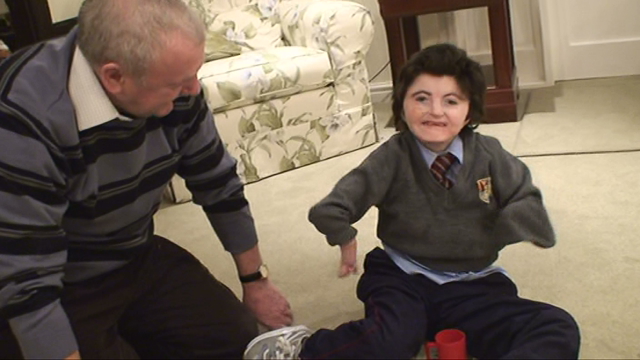Other Health Issues in Cornelia de Lange Syndrome
Eye problems
Eye problems associated with Cornelia de Lange syndrome include; short-sightedness (myopia), infection and inflammation of the lining of the eye (conjunctivitis), infection and inflammation of the eyelids (blepharitis) and inability to fully open the eyes (ptosis)
Ear problems
Commonly reported ear problem in Cornelia de Lange syndrome are chronic middle ear infections (otitis media) and mild-to-moderate hearing loss (in the absence of otitis media).
Nasal issues
Infection of the sinuses (sinusitis) is a common problem in individuals with Cornelia de Lange syndrome.
Cleft palate occurs in 20% of cases and high arched palate is very common.
Dental issues
There are a wide range of dental issues that can occur in Cornelia de Lange syndrome, for a list of the issues download the summary at the bottom of this page.
Reflux associated with gastrointestinal issues can be a major problem for the enamel that covers teeth.
Bone and joint problems
Curvature of the spine (scoliosis) occurs more commonly in children with Cornelia de Lange syndrome, than in children without Cornelia de Lange syndrome.
Restricted movement at the elbow joint is very common in Cornelia de Lange syndrome.
Abnormalities in the hip occur in more than 10% of children and adults with the syndrome.
Seizures
Seizures are reported in 1 out of 4 children with Cornelia de Lange syndrome. A seizure is caused by an abnormal discharge of electrical activity in the brain.
Peripheral sensory neuropathy
There is some evidence that children and adults who have Cornelia de Lange syndrome might have a peripheral sensory neuropathy. This means, that part of the nervous system that is associated with pain and sensation (peripheral nervous system) might not be sending the right signals to the brain.
There is suggestion that peripheral sensory neuropathy may be relevant to self-injury in Cornelia de Lange syndrome.
Heart defects
Around 1 out of 4 children with Cornelia de Lange syndrome are born with a heart condition of some sort. However, surgery is not usually necessary for the most commonly occurring heart problems in Cornelia de Lange syndrome.
To learn more about heart problems in individuals with Cornelia de Lange syndrome download the summary at the bottom of this page.
Undescended testes
Undescended testicles are very common in males with Cornelia de Lange syndrome. There are risks associated with not bringing them down, including heightened risk of developing testicular cancer, hernias, and twisting of the testicle.
CLICK AND DOWNLOAD
To read more about some of the health issues outlined above, including how to address and manage them please download the health summary below.
Other Health Issues in Cornelia de Lange Syndrome - Summary




